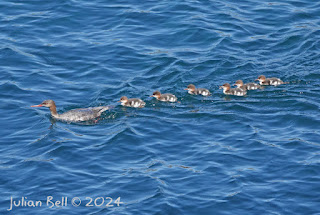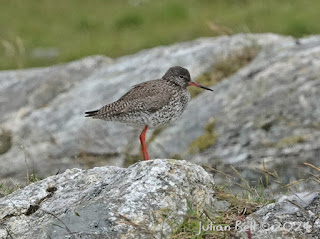A week in Northumberland:) What a place and how things have changed in the North East - Avocet and Little Egret were very rare species as I was growing up but are now rather common.
Kicked off the week with a family visit to Salthome pools - an RSBP reserve in the middle of one of the most heavily industrialised areas of the UK. I've seen it time and again - even out in Øygarden where more birds breed in areas where industry is the main priority than in nature reserves. Equinor's plant at Kollsnes probably supports more breeding waders than the nature reserve at Tjeldstø. No disturbance from walkers, dogs, photographers and no f***ing cats mean that such areas seem to work better than "available" nature reserves. Don't get me started.
This has pretty much always been a fact but times change. When I was growing up in the NE species like Avocet and Little Egret were very rare. Now they are common and regular breeders there. Next stop Norway?
At Salthome I saw a lot of species I don't see much of in Norway with around 40 Avocet avoset present along with Little Ringed Plovers dverglo and a bunch of wildfowl that would have set pulses racing back home:) , Marsh Harrier sivhauk, Stock Dove skogsdue and a whole bunch of other species were seen here - without even trying.
In Northumberland Common Buzzard musvåk were exactly that common!:)
Half an hour sitting on the sofa at my Dad's place in Seahouses produced a few Manx Shearwater havlire heading north along with a pale phase Arctic Skua tyvjo and hundred/thousands of Gannets havsule, Guillemots lomvi, Puffin lunde and Razorbills alke.
Meeting up with daughter #1 at Cresswell a sudden downpour saw us running for shelter as the rain set in. Nauturally the hide overlooking the pools there was the place to go Over 20 Avocet avoset, 12 Little Egret silkehegre, a Med Gull svarthavemåke, several Little Grebe dvergdykker and A LOT more besides made me wonder if I am living in the right country. How on earth can a country as over populated as the UK have so much birdlife compared to Norway?
Five minutes at Monkshouse pools near Seahouses which were spent on the phone resulted in what would have been a mega haul back in Norway with Gadwall snadderand, Shoveler skjeand, Little Grebe dvergdykker, Coot sothøne and a whole lot more. How on earth can a place under so much people pressure produce so many birds?




















































